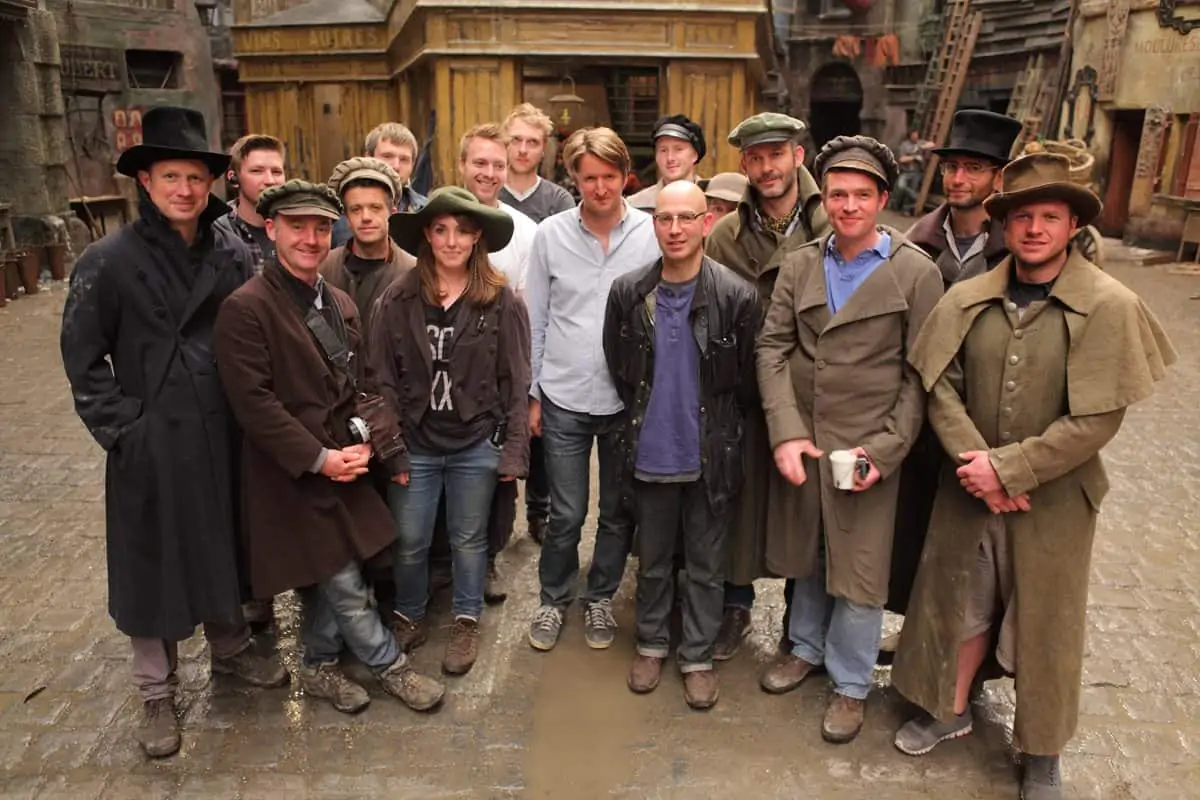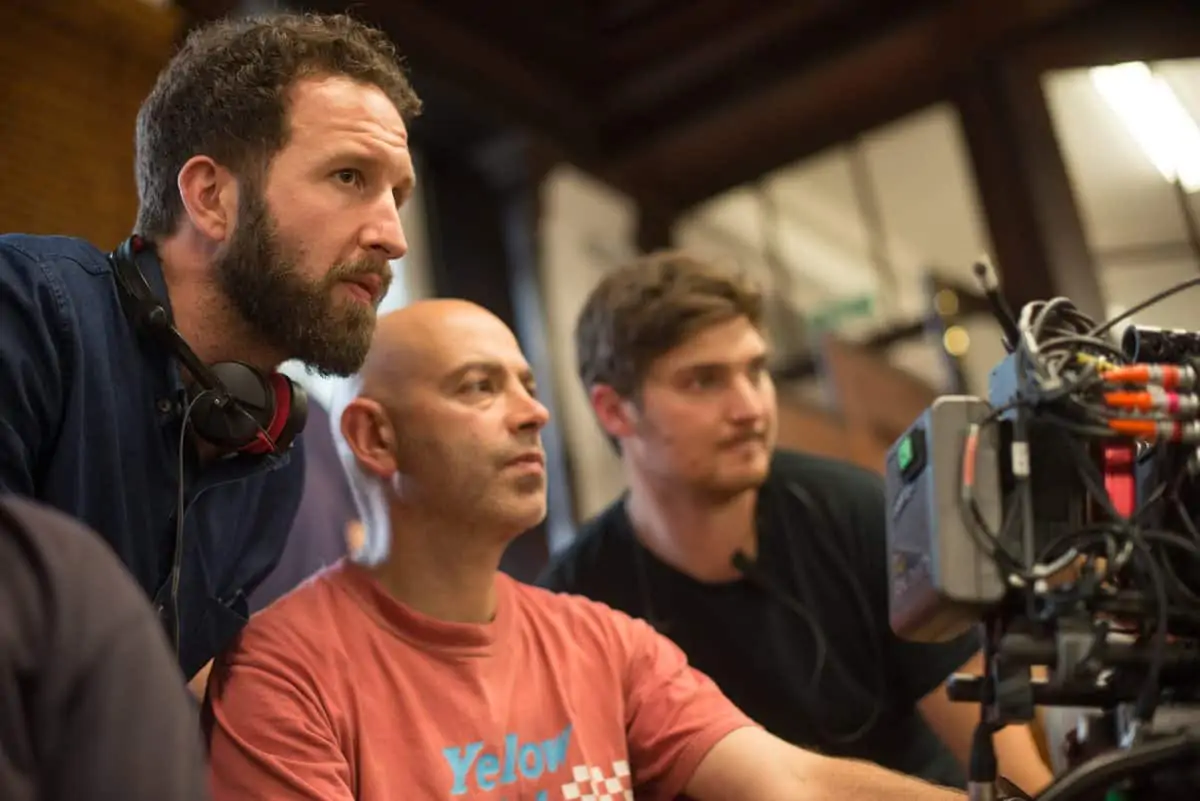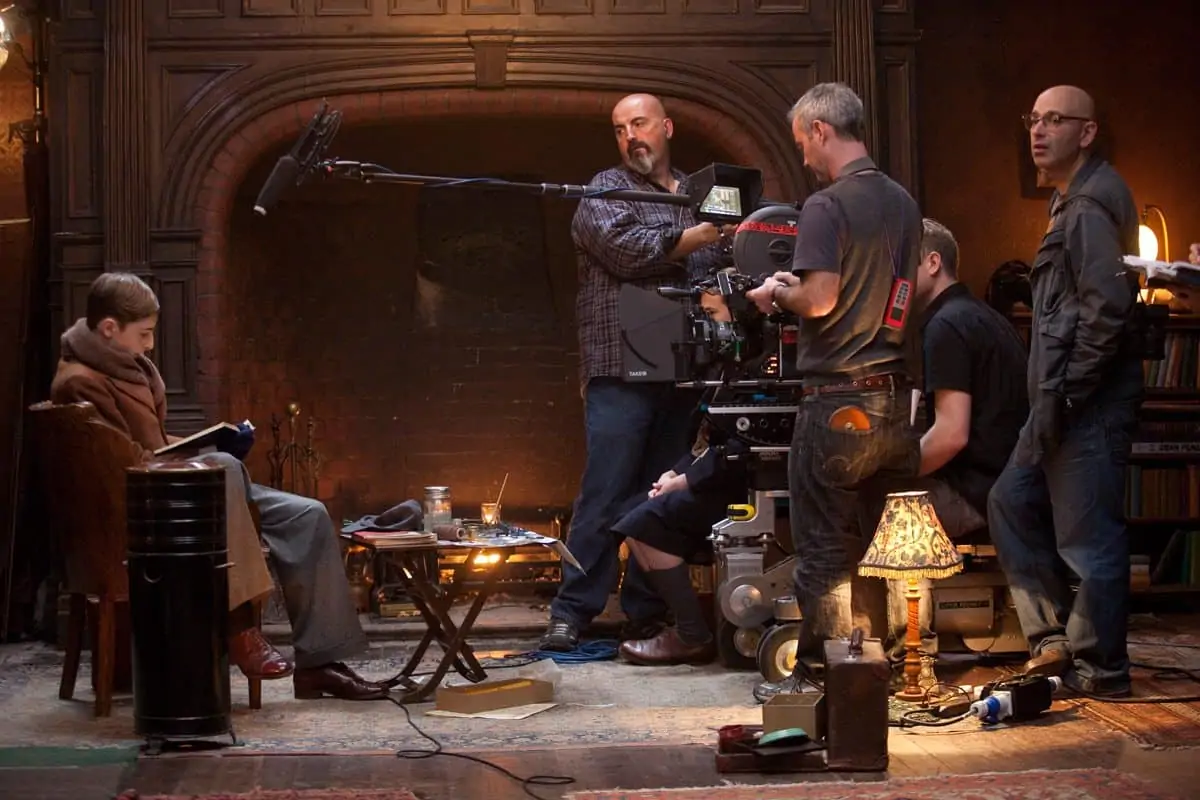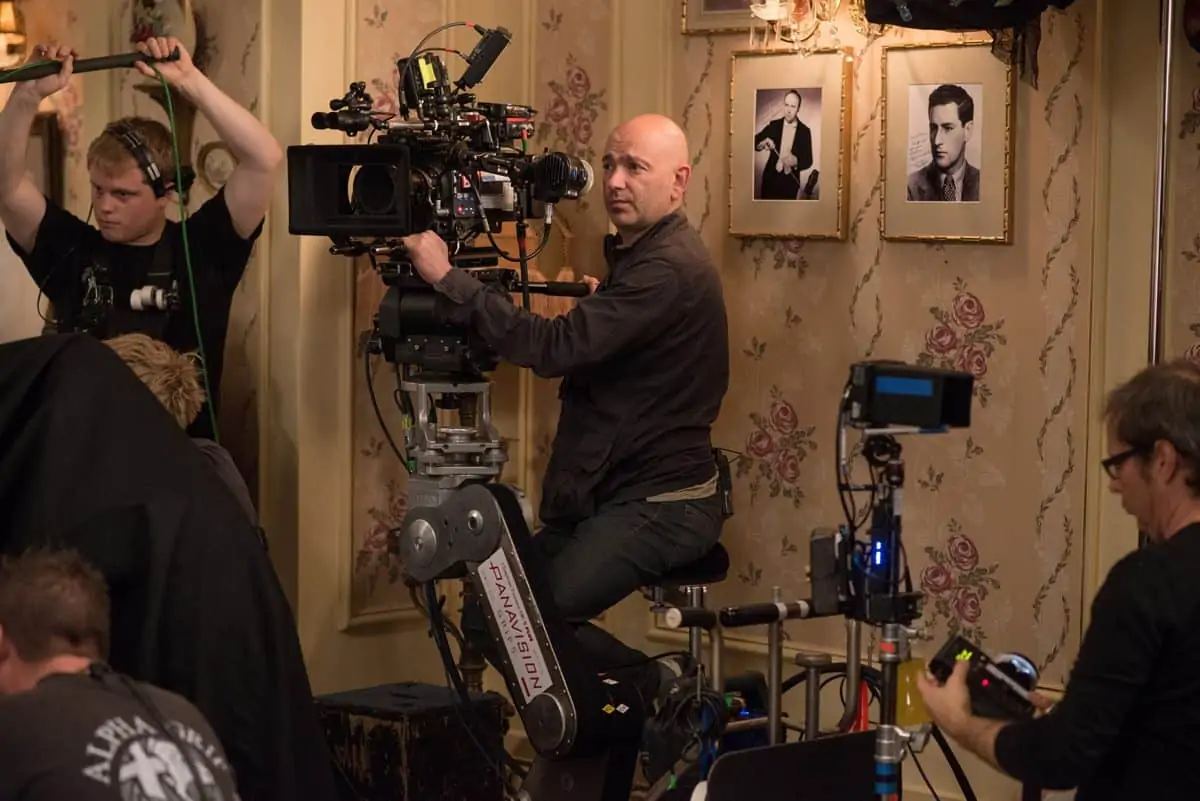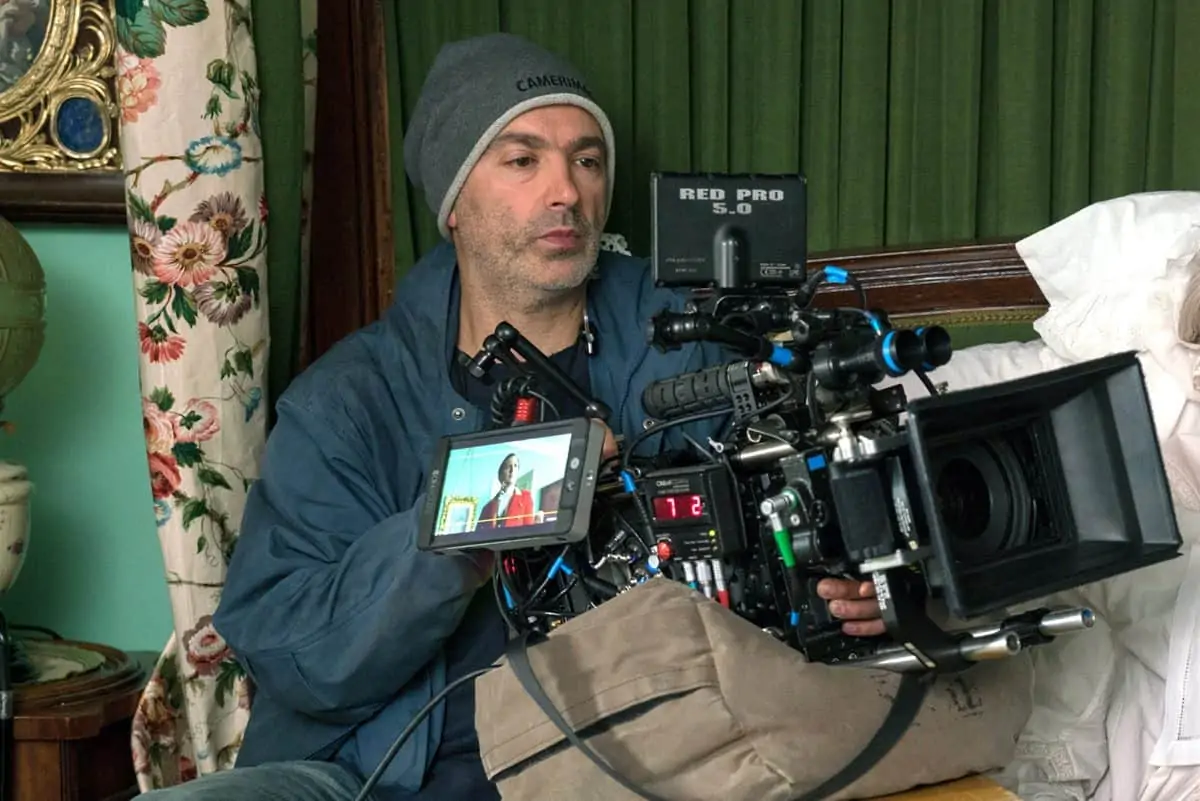Perfect Harmony
Danny Cohen BSC / Les Miserables

Perfect Harmony
Danny Cohen BSC / Les Miserables
BY: David Heuring
Les Misérables, Victor Hugo’s classic 1862 novel, takes places against the baroque backdrop of early 19th century France. This latest cinematic version of the oft-told tale is based on the hugely successful theatrical musical, which has been seen by more than 25 million people. The cast of the new movie includes Hugh Jackman as Valjean, Russell Crowe as Javert, and Anne Hathaway as Fantine.
The talent behind the scenes included director Tom Hooper (The Damned United) and cinematographer Danny Cohen BSC. The pair had previously collaborated on The King’s Speech, which earned an Oscar for Hooper, an Oscar nomination for Cohen, and BAFTA nominations all around. For Les Misérables, they had roughly 70 production days, spent at locations including Winchester College, Her Majesty’s Naval Base Portsmouth, and Boughton House in Northamptonshire, with a few scenes and backgrounds shot in Digne, France, where the original novel is set. More than half of the shoot, however, was done at Pinewood Studios. The film is scheduled for release on Christmas Day in North America, and in early January in the United Kingdom. David Heuring caught up with Cohen as he was grading the movie in London.
Did you look at any of the many previous film versions of Les Misérables, like the 1935 feature film shot by Gregg Toland ASC?
Yes, I think we looked at every single previous version. That’s a fun aspect of prep. They’re really interesting. I think my favourite was that 1935 film with Charles Laughton. They all gave us something to think about, even though we were doing things differently as a full-on musical. At the same time, Tom has always gone for something with authenticity. For me, the task was to do something that felt real, something where people seem genuinely poverty-stricken – the conditions were pretty grim. The question was how to integrate and balance the singing with the hideous conditions of the time. The minutiae that Victor Hugo described is incredible. But he was describing a world where nobody was singing.
What else did you do during the prep period?
We did quite a bit of testing. We compared Alexa and 35mm film. We looked at 3D, and 65mm film, the quality of which is amazing. In the end, for a variety of reasons, we chose 35mm. What film has over digital is that it’s organic, it’s slightly softer, and there’s grain. There’s a certain sharpness to digital; you can treat it, but if you shoot on 35mm, what you see is what you get. You get an amazing image without a lot of post production. We shot with three cameras on the main unit, and there were various other units rattling away as well.
We shot well over a million feet of film using (Kodak Vision3) 200T, 500T, and 250D. We also shot a tiny bit of 50D. We started off using some 50D, but with the English weather, the 250D gives you a little more flexibility for exteriors as the light fails at the end of the day.

Which format did you settle on and why?
We shot Super 35mm 3-perf, and the aspect ratio was 1.85:1. One might think it’s a no-brainer, the film would have to be widescreen because it’s an epic, massive story with armies fighting and lots of action. But obviously, when you go widescreen, you lose a lot of the height in the frame. That means you’ve got to come back wider on a wide lens to see more of what’s upstairs. Why not let the spaces have more room on the screen? When you start something like this you ask yourself tons of questions, trying to work out how to do it. In a sense, there’s really no right way of doing it and there’s no wrong way of doing it. Basically, you make some decisions which, hopefully, are the right choices to tell the story.
You used Arricam LT and ST cameras, Zeiss Master Prime lenses, and Angenieux Optimo zoom lenses. What was the thinking behind your lens choices?
We used the zooms quite a bit on the exteriors and at the locations. Often we wanted to get two or three cameras into very tight spaces, and that was another reason to shoot handheld. We could get more cameras and more camera crew in if we didn’t have a lot of heavy machinery. Often these questions are answered by the practical reality of shooting. Tom has got a great aesthetic that we used quite a lot on The King’s Speech, which was shot with wide lenses but quite near the actors. From a lighting perspective, it’s the worst-case scenario. You’ve got absolutely nowhere to put the lights. On a longer lens, away from the actors, the angle of view is quite narrow, so at least you’ve got places to put lights, but shooting wide and tight means lighting through windows, practical sources and being sneaky about where you end up putting lights.
The period also meant that we used a lot of candles and torches to give the movie real atmosphere. To me, it required a balance between natural and theatrical lighting, so that’s what I was trying to achieve – to make it feel like the singing is just integral to the film, but not making it overblown and too stagey. It will be interesting to see if I got it right. Initially, I think people are going to be slightly gob-smacked, but hopefully it will feel natural very quickly so they’re singing but that’s just how the story gets told.
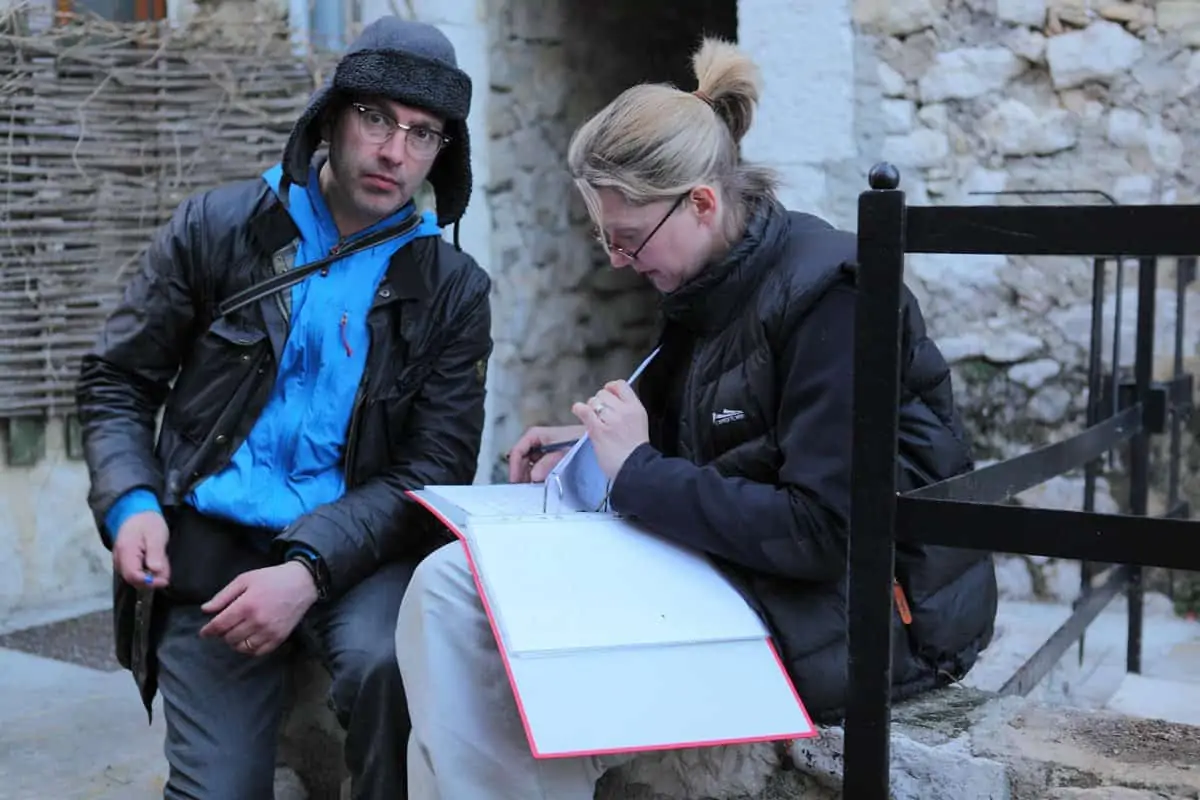
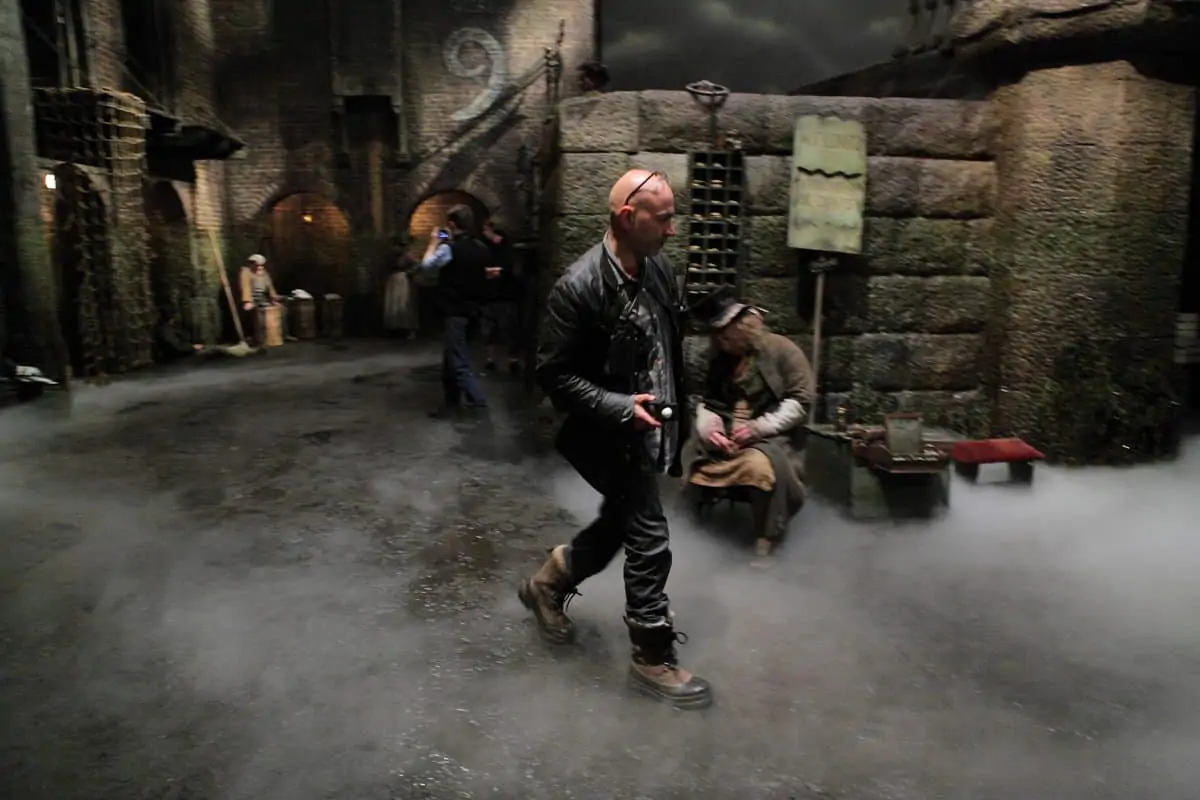
You shot on a combination of locations and stages, correct?
Yes. I’d estimate that we did about 60% on a few stages at Pinewood. We needed a properly soundproofed studio. One set was a street that ran the length of the studio, and around that were a lot of different, smaller sets that we squeezed in. A café with three floors at the head of the street where the students gather was also a big element.
How did you handle the singing on set? Were there pre-recorded tracks playing back as you shot?
We shot the singing live and recorded as we shot. That was another thing we tested, whether you feel the difference between an actor singing to playback and an actor singing to live accompaniment in an earpiece. There was no question – the live performance grabs you, it makes the hair stand up on the back of your neck. The actor leads the music, and the actor can perform and do what he or she wants to; it’s much more powerful than singing to something prerecorded months ago. You want the audience to connect emotionally to what’s on the screen. I think it’s a no-brainer too – you have to do it live. It’s a complication, because it’s like filming a live performance every day.
What was your general strategy for shooting performances?
We gave the actors as much space and freedom as possible, even in the real locations. We tried to light through windows and not complicate things with too much gear getting in the way. We often had three cameras shooting, sometimes all handheld. We tried to shoot the music as a performance, so we had to capture it in one take, if possible. That meant using every method – cross-shooting, wide and tight, endless variation – depending on the song and the blocking. On later takes, we might pick up sections. The music department could very quickly pick up and play music from take one and record the singing for a certain section during take three. I think the key was that it was more about the performance. That’s what makes it work in the film. The game is to make it feel like it wasn’t over-sophisticated.
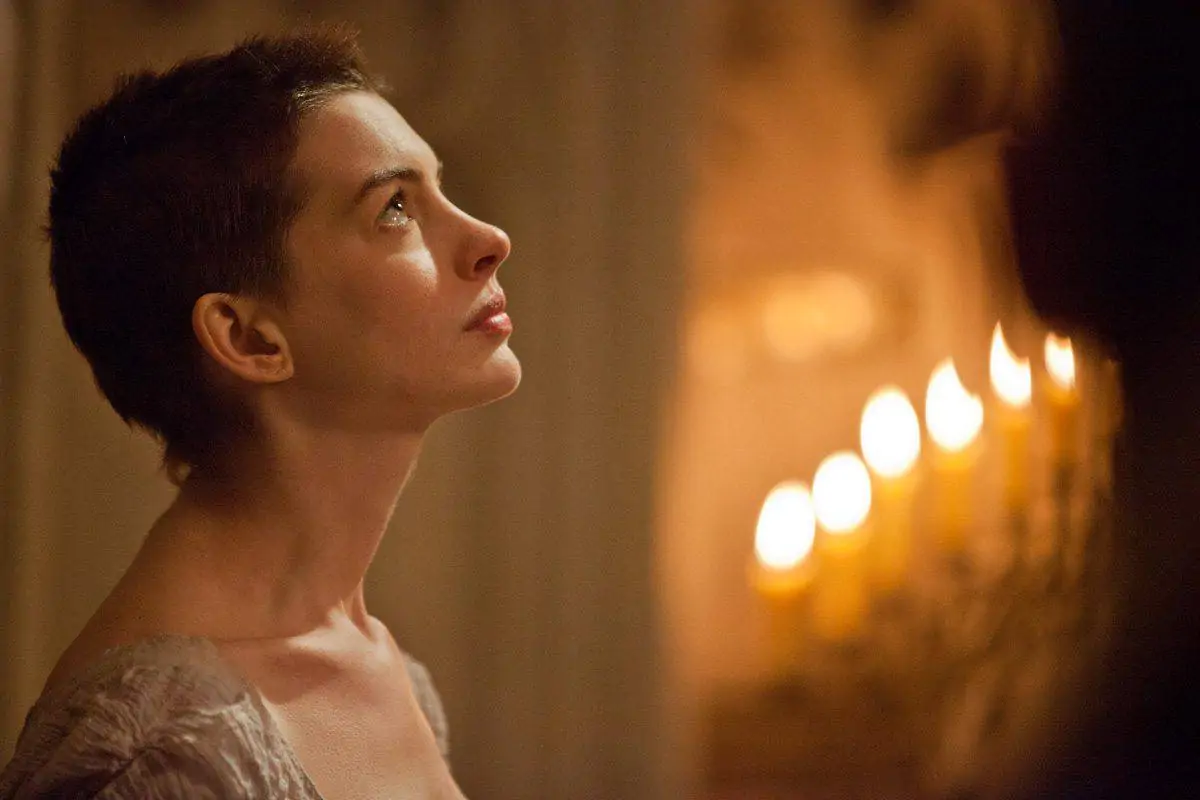
Can you give an example of your approach to camera movement?
A lot of the film is handheld and quite rough. But there is a big moment when Hugh Jackman comes out of church, rips up his parole papers and throws them into the abyss. We shot part of that at an Oxfordshire church, and that element was to be dropped into a CGI mountain environment. It was planned as a big, sweeping crane move with magnificent vistas. But it occurred to us that to have these spectacular crane moves now and again would be slightly jarring. So what we ended up doing was a handheld move back as Hugh Jackman runs out of the church. The camera operator then stepped back onto a crane, and we turned away from Jackman and headed to the heavens. Rather than a slick Technocrane move, it’s all a bit messy but much more part of the film.
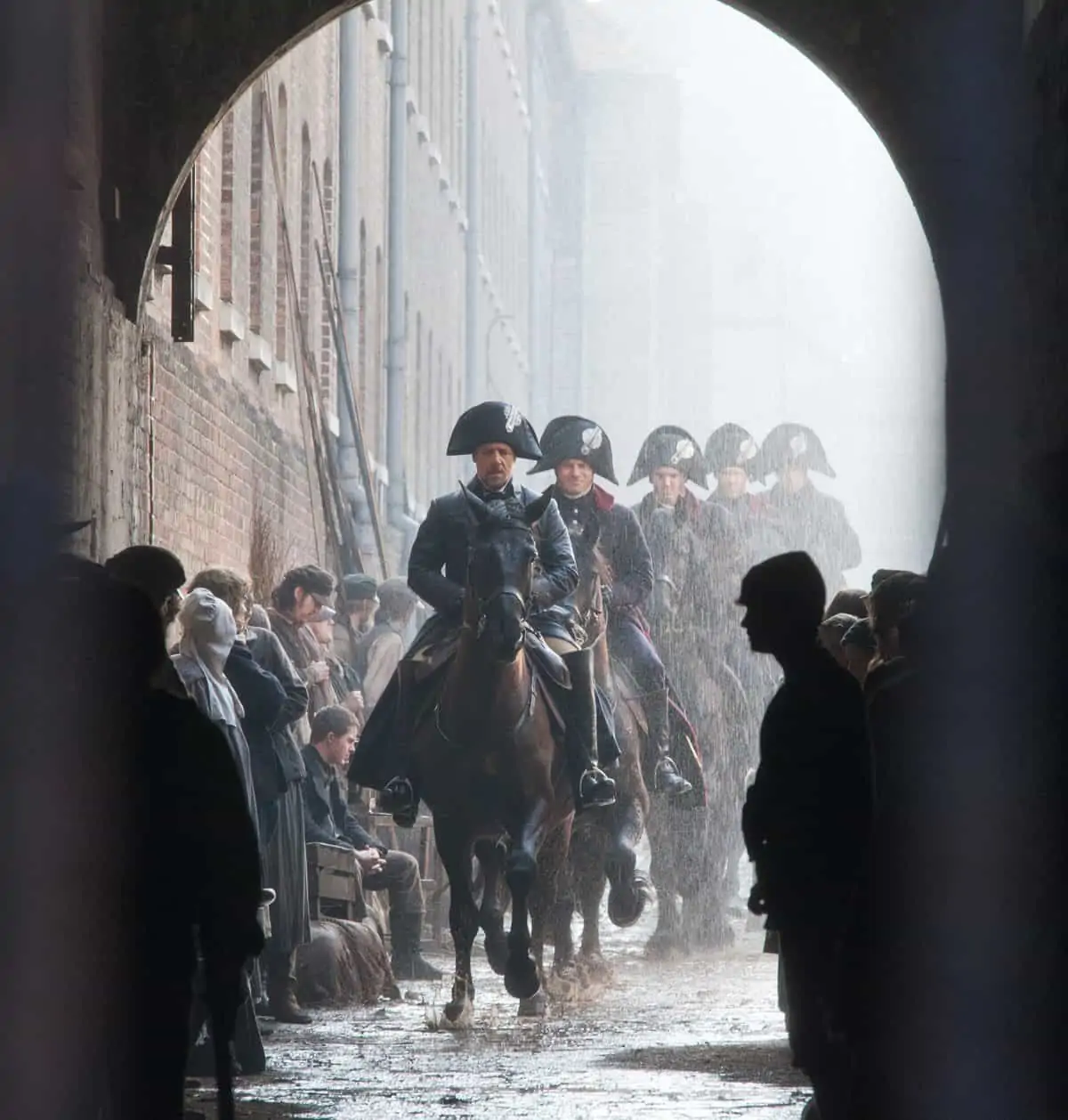
" I think the key was that it was more about the performance. That’s what makes it work in the film. The game is to make it feel like it wasn’t over-sophisticated."
- Danny Cohen BSC
Of course, the story includes a classic, climactic chase in the Paris sewers.
Yes. Initially, we were going to shoot in an amazing location in Finsbury Park, a large underground aquifer built in the 19th century. One of our references was The Third Man (1949; photographed by Robert Krasker BSC). Unfortunately, there was torrential rain in London and the location suffered some damage making it unsafe to film there. So we ended up doing it on the stage. Eve Stewart, the production designer, built the sewer set on a stage. It worked out really well.
The production design looks astonishing in the trailer.
The production design is amazing. It’s the detail that will blow people away. Initially, we did some scouting in France and we thought that maybe we should spend more time shooting real locations in France. We gathered lots of images and photos. We did shoot a week in France, but the practicalities of shooting something this size in real locations abroad can throw off the schedule.

How do you plan to use the digital intermediate?
We’re doing the DI grade at Company 3 in London with Adam Glasman. What’s great for me is that our rushes went through Company 3 as well. There were a lot of complicated scenes. This film is like a jigsaw puzzle. There’s never going to be a lot of time in post. What’s nice about film is that we can make the rushes feel like what we’re going to do in the final DI. People know the look of the movie. Of course, there is a chunk of work to do in the DI. The big sequence at the end of the film is dusk to night to sunrise. It includes an assault by 200 troops on the barricades and 200 students coming and defending the barricade. There are sky replacements, to be done by The Mill. The whole sequence takes place as the sun rises and making two weeks work feel like 10 minutes in real time is what we are trying to achieve.
Any general thoughts about translating this material to the screen?
I think we tried to stay very faithful to the book. But it’s a monster of a book, about 1,200 pages. It’s a fantastic page-turner, engrossing and exciting. But it’s quite daunting. How do you squeeze that much into a two-and-a-half-hour movie? Of course, a lot of the actual detail in the book doesn’t make it into the movie. The music and songs dictate a lot of the story. I think that’s what is fun about the movie – you’ve got the emotions from the films and the musical. The musical is so familiar; 25 million people have seen it. I’m interested to see how die-hard fans of the stage version are going to feel about it. I’m excited and very nervous.
